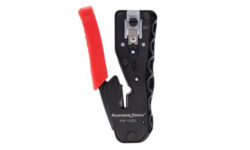Security Integration Trends in 2022: One Size No Longer Fits All
Osvaldo San Martin, vice president and GM of security solutions at Johnson Controls, provides predictions for systems integration in 2022.

(Image: Dimco/stock.adobe.com)
The start of the new year always brings a sense of optimism and curiosity for what’s next, but if the past two years have taught us anything, it is that we have to be prepared to be flexible. Security is a dynamic and fast-paced industry, with the leaders in innovation continuously trying to improve safety for occupants through new tools and resources. With so many systems available, building managers are asking their integrators, “What is the best option available to me?”
The response is not one-size-fits-all. There is no longer one go-to solution that will fit buildings of all shapes and sizes. Security also doesn’t mean the same thing to every person – even within an organization, employees who work together might have different thoughts about what measures should be in place to keep them safe.
Integrators now have the chance — and the responsibility — to offer their customers holistic security systems that are customized to meet their exact needs and help provide for, the ongoing safety of occupants for years to come.
Reopening buildings safely
The first priority many customers have this year is helping to make their buildings safer for all or some occupants to return, and they are turning to integrators to help them put the right tools in place. Outside of traditional access control and video surveillance systems that help enforce social distancing and reduce touchpoints, new technologies such as smart elevated skin temperature scanning solutions are going as far as providing a line of defense before occupants even enter the building. Integrators should be sure to make their customers aware of all the solutions they can implement to help occupants feel safe in their spaces.
Building unique systems through customization
As new technologies emerge, building managers are also realizing they no longer need to settle for a cookie-cutter approach for security, and integrators can provide cutting-edge systems that are in line with their specific goals. Integrators can collaborate with their clients at an early stage to understand what unique organizational processes and policies will best suit their needs, considering all factors including the size of the building, the existing security systems in place, the number of people in buildings and much more.
Integrators should look for opportunities to co-create solutions with customers. By focusing on operational priorities such as practice, process and approach rather than specific implementation, integrators can collaborate with their customers to determine their desired outcome and, through those discussions, integrators can customize a solution they know will reach their customer’s end goal.
Increased functionality through integration
Successful communication in high-functioning and innovative buildings does not only take place between the integrator and the customer, but also between the different pieces of the building. For optimal connectivity, functionality and overall security, solutions need to speak to each other and work together.
Even if one solution does not offer every piece of a particular security system’s puzzle, an expanded variety of offerings (either of their own or through trusted partners) allows integrators to incorporate new technology into existing systems so that the different offerings can come together to achieve the end goal.
Bringing together the advantages of separate systems — such as intrusion detection, access control and video surveillance — can create a strong overall system and will delight customers with functionalities they did not think were possible with their existing solutions. Not only does integration create a stronger system, but these systems also help integrators increase efficiency, reduce costs and deliver business outcomes to their customers.
Collaboration does not only occur between solutions. For integrators to be successful, there needs to be collaboration across the security industry as a whole. To offer the best products to their customers, integrators should work to bring together their strengths and create top-of-the-line solutions.
Pushing the edge with artificial intelligence
Artificial Intelligence (AI) has a fast-growing role in security systems. As systems mature and use technology in more complex ways, we are seeing capabilities increase and algorithms provide integrators with more information to drive better-informed decisions. For example, when there is a maintenance issue with a security system, rather than an integrator having to go to the building to find out what the issue is, more intelligent systems can now tell integrators what is wrong from anywhere so that they can begin to solve problems without having to be on site.
The biggest trend for security in 2022 will be continuous change, and it will be the job of integrators to help guide their customers into the fast-paced future of security technology and drive change rather than follow it.
 Osvaldo became Vice President and General Manager of Security Solutions at Johnson Controls in October 2021. In this role, he leads a team of 5,000 employees who provide technology and security solutions to protect customers’ employees, facilities and assets.
Osvaldo became Vice President and General Manager of Security Solutions at Johnson Controls in October 2021. In this role, he leads a team of 5,000 employees who provide technology and security solutions to protect customers’ employees, facilities and assets.
If you enjoyed this article and want to receive more valuable industry content like this, click here to sign up for our FREE digital newsletters!

Security Is Our Business, Too
For professionals who recommend, buy and install all types of electronic security equipment, a free subscription to Commercial Integrator + Security Sales & Integration is like having a consultant on call. You’ll find an ideal balance of technology and business coverage, with installation tips and techniques for products and updates on how to add to your bottom line.
A FREE subscription to the top resource for security and integration industry will prove to be invaluable.







